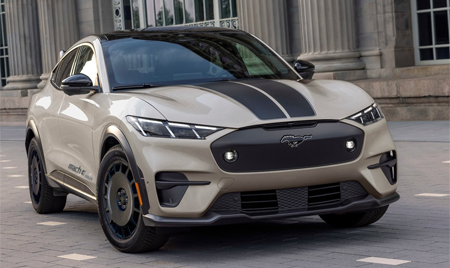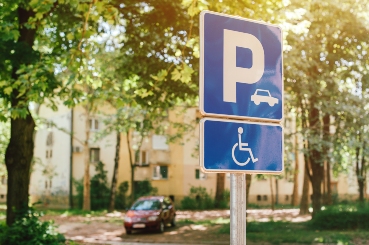Hands-free driving, also known as autonomous driving or self-driving, is a revolutionary technology that promises to transform the way we travel. This innovative system allows vehicles to operate without constant human input, making driving safer, more efficient, and more convenient.
In this blog, we’ll delve into the intricacies of hands-free driving, exploring its different levels of autonomy, the underlying technology, and its potential impact on our society. We’ll also discuss the safety concerns, legal implications, and the ethical questions surrounding this emerging technology.
A Step Closer to Driverless Cars
The Department of Transport (DfT) has outlined plans to legally define cars with Automated Lane Keeping Assistance (ALKS) as self-driving.
This move would legalise the hands-off operation of cars with ALKS at low speeds. If approved, it marks a step forwards in the legalisation of driverless cars and will allow some vehicles to drive themselves under certain circumstances on UK roads.
What is ALKS?
Automated Lane Keeping System (ALKS) is a technology that allows a vehicle to control its movement within a single lane on a motorway-type road, without requiring constant driver input. This means that in certain conditions, the driver can take their hands off the steering wheel and let the car drive itself.

Legal Status of ALKS in the UK
As of 2021, the UK government has made significant progress in regulating ALKS technology. Some vehicles equipped with ALKS are now legally defined as self-driving under specific conditions. This means that in certain situations, drivers can legally take their hands off the steering wheel and let the car drive itself.
However, it’s important to note that ALKS is not fully autonomous. Drivers must remain alert and ready to take control of the vehicle at any time. The technology is designed to assist the driver, not replace them.
How Does the System Work?
Hands-free driving systems use a combination of advanced sensors, cameras, and artificial intelligence to navigate roads safely. The system monitors the road conditions, traffic, and other vehicles, making real-time adjustments to the vehicle’s speed, steering, and braking.
While these systems offer increased convenience and safety, it’s important to understand that they are not fully autonomous. The driver remains responsible for the vehicle and must be ready to take control at any time.
Here’s a breakdown of how the system typically works:
- Driver Monitoring: The vehicle is equipped with cameras and sensors that constantly monitor the driver’s attention and readiness to take control.
- Hands-Free Driving: Under specific conditions, such as on designated motorways, the system allows the driver to take their hands off the steering wheel. However, they must remain alert and focused on the road.
- Driver Attention Monitoring: The system continuously assesses the driver’s alertness. If it detects that the driver is not paying attention or is unable to take control, it will issue a series of warnings.
- System Takeover: If the driver fails to respond to the warnings, the vehicle will automatically slow down, activate its hazard lights, and bring itself to a safe stop.
It’s crucial to remember that hands-free driving is a privilege, not a right. Always be prepared to take control of the vehicle at a moment’s notice.

Is Hands-Free Driving Legal?
While advanced driver assistance systems (ADAS) are becoming increasingly sophisticated, it’s crucial to understand their limitations and legal implications. In the UK, hands-free driving, where a driver can completely remove their hands from the steering wheel, is not yet fully legal.
ADAS systems, such as those found in the Ford Mustang Mach-E with BlueCruise, allow for hands-off driving under specific conditions, but drivers must remain attentive and ready to take control at any moment. It’s essential to adhere to local traffic laws and regulations, as well as the guidelines provided by the vehicle manufacturer.
Can You FaceTime While Hands-Free Driving?
Engaging in video calls, such as FaceTime, while driving is strictly prohibited in the UK, regardless of whether you’re using a hands-free device. Video calls significantly distract drivers, impairing their ability to react to changing road conditions and potential hazards. It’s crucial to prioritise road safety and avoid any activity that could compromise your driving ability.
Can You Make Calls When Hands-Free Driving?
While hands-free phone calls are technically legal in the UK, it’s important to use them responsibly. Even with hands-free technology, phone calls can still divert your attention from the road, especially during complex driving scenarios. It’s advisable to limit phone usage while driving to essential calls and to prioritise focusing on the road.
What Cars Have Hands-Free Driving?
Several car manufacturers are now offering vehicles equipped with advanced driver assistance systems that enable hands-free driving under specific conditions. One notable example is the All-Electric Ford Mustang Mach-E, which features BlueCruise.
This system allows drivers to take their hands off the steering wheel on compatible roads, such as motorways, while the vehicle maintains a safe speed and distance from other vehicles. However, it’s important to note that BlueCruise is not fully autonomous and requires constant driver supervision. Other car manufacturers, such as Mercedes-Benz and Tesla, also offer similar systems with varying levels of autonomy.
The Opposition
So far, we have covered the benefits of hands-free motoring, but what about the cons.
Insurance companies have warned the government’s definition of ALKS as self-driving is misleading, as the legislation would only enable hands-free driving in certain circumstances up to speeds of 37mph.
Furthermore, Thatcham Research has identified several scenarios in which it says ALKS technology may not respond in the same way a competent driver necessarily would. For example, it found variations in response when pedestrians were involved, when debris was on the road and when lanes were closed. So there are numerous questions which need resolving before it is possible to legalise the hands-free operation of cars.
Finally, under existing legislation, manufacturers are not required to share crash data as is the norm in other industries like the aviation sector. This is an area the government needs to consider to enable the gathering of comprehensive information from individual incidents involving self-driving cars. Any information gathered could then be utilised to make improvements which would surely be vital to the successful roll-out of self-driving technologies.




















